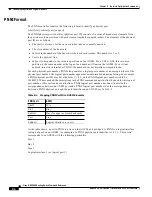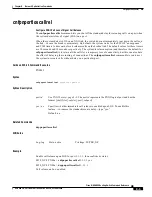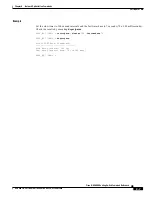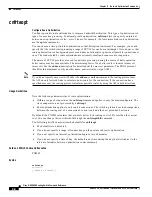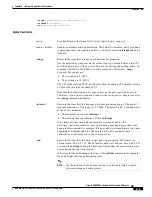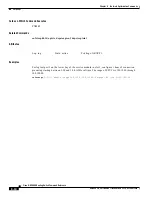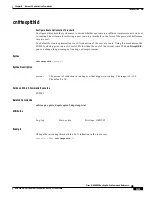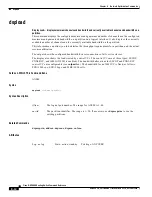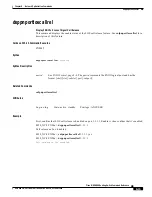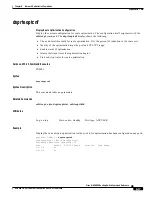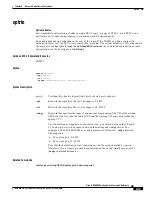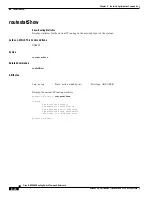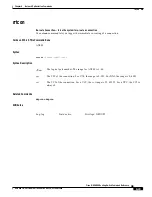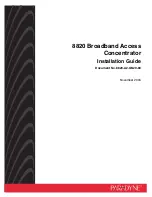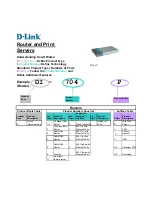
8-9
Cisco MGX 8850 Routing Switch Command Reference
Release 2.0, Part Number 78-10467-04 Rev C0, October 2001
Chapter 8
Network Optimization Commands
cnfrteopt
[-range <starting-vpi/vci..ending-vpi/vci>]
[-interval <interval>]
[-tod <start-time..end-time>]
Syntax Description
portid
Port identifier has the format [shelf.]slot[:subslot].port[:subport].
enable | disable
Enables or disables route optimization. The default is disabled, but if grooming
is operational and you want to disable it, you must execute cnfrteopt and enter
“disable.”
-range
Keyword that specifies a range of connections for grooming.
Use the notation as it appears on the syntax line: type a slash between the VPI
and VCI and two dots with no spaces between the starting and ending values. For
example, 100/1000..200/10000 is a valid parameter to follow the –range
keyword. The ranges are:
•
The vpi range is 0–4095.
•
The vci range is 32–65535.
The VPI of the starting SPVC must be less than the ending VPI, and the starting
VCI must be less than the ending VCI.
Note that the default range is all connections on the port specified by portid.
Therefore, if you want to groom all connections on the portid, simply leave out
the -range command delineator.
-interval
Keyword that specifies the frequency at which grooming begins. The units of
measure are minutes. The range is 10–10000. The default is 60. Counting starts
at one of two moments:
•
The moment you execute cnfrteopt
•
The starting time specified by TOD in cnfrteopt
If the interval is less than half the amount of time specified by the
start-time..end-time parameter, route optimization may begin more than once
during the time period. For example, if the periods of optimization are two hours
beginning at midnight and 4:00 AM and the interval is one hour, route
optimization could occur two to four times per day.
-tod
Keyword that specifies the time to start and stop grooming. The format is a
24-hour clock: 00:00–23:59. The default for both start and end-time is 00:00. If
you execute cnfrteopt during the time specified by tod, the optimization cycle
begins during the next time interval.
If the time for the node changes (by way of the cnftime command, for example),
the node might skip one optimization cycle.
Note
Use the notation in the Syntax section: type two dots with no spaces
between starting and ending times.










